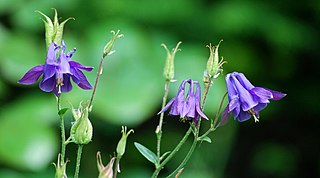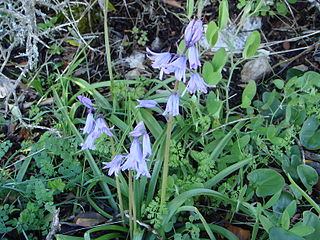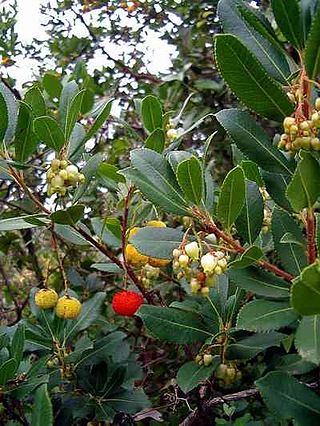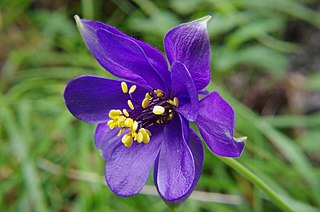
Aquilegia is a genus of about 130 species of perennial plants that are found in meadows, woodlands, and at higher elevations throughout the Northern Hemisphere, known for the spurred petals of their flowers.

Hyacinthoides hispanica, the Spanish bluebell or wood hyacinth, is a spring-flowering bulbous perennial native to the Iberian Peninsula. It is one of around a dozen species in the genus Hyacinthoides, others including the common bluebell in northwestern Europe, and the Italian bluebell further east in the Mediterranean region.

The flora of Italy is all the plant life present in the territory of the Italian Republic. The flora of Italy was traditionally estimated to comprise about 5,500 vascular plant species. However, as of 2019, 7,672 species are recorded in the second edition of the flora of Italy and in its digital archives Digital flora of Italy. In particular, 7,031 are autochthonous and 641 are non native species widely naturalized since more than three decades. Additionally, further 468 exotic species have been recorded as adventitious or naturalized in more recent times.

Heinrich Moritz Willkomm was a German botanist who served as a professor of botany at Tharandt, the University of Dorpat and at the University of Prague. He travelled widely across Spain and Portugal and became a specialist on the flora of the Iberian region. The standard author abbreviation Willk. is used to indicate this person as the author when citing a botanical name.

Aquilegia atrata, the dark columbine, is a perennial species of flowering plant in the family Ranunculaceae, native to the Alps and Apennine Mountains.

Aquilegia alpina, the alpine columbine or breath of God, is a perennial species of flowering plant in the family Ranunculaceae, native to the western and central Alps. Though rare in its Swiss, Austrian, and Italian range, it is commonly found in the French Maritime Alps. A. alpina is appreciated for its light blue to blue-purple flowers.

Aquilegia olympica is a perennial flowering plant in the family Ranunculaceae, native to Turkey, Iran, and the Caucasus.

Aquilegia amaliae, common name Amalia's columbine, is a perennial species of plant in the family Ranunculaceae, native to the southern Balkans.
Aquilegia aragonensis is a perennial flowering plant in the family Ranunculaceae, endemic to northern Spain.

Aquilegia barykinae is a perennial flowering plant in the family Ranunculaceae, endemic to the Russian Far East. The species was first described in 2014. Its flowers are lilac-blue.

Aquilegia cossoniana is a perennial flowering plant in the family Ranunculaceae, native to the Atlas Mountains in northwestern Africa.
Aquilegia dichroa is a perennial flowering plant in the family Ranunculaceae, native to Portugal and northwestern Spain.

Aquilegia dumeticola is a perennial flowering plant in the family Ranunculaceae, native to southeastern Europe.

Aquilegia fosteri, common name Foster's columbine, is a perennial flowering plant in the family Ranunculaceae, native to Utah and Arizona.

Aquilegia ganboldii is a perennial flowering plant in the family Ranunculaceae, native to Mongolia, northeast China, North Korea, and Siberia.
Aquilegia grubovii is a perennial flowering plant in the family Ranunculaceae, native to northern Mongolia and Tuva in Russia.
Aquilegia guarensis is a perennial flowering plant in the family Ranunculaceae, native to the Pyrenees.
Aquilegia hebeica is a perennial flowering plant in the family Ranunculaceae, native to northern China.
Aquilegia hirsutissima is a perennial flowering plant in the family Ranunculaceae, native to France and Spain.
Aquilegia holmgrenii, common name Noel's columbine, is a perennial flowering plant in the family Ranunculaceae, endemic to Utah.












